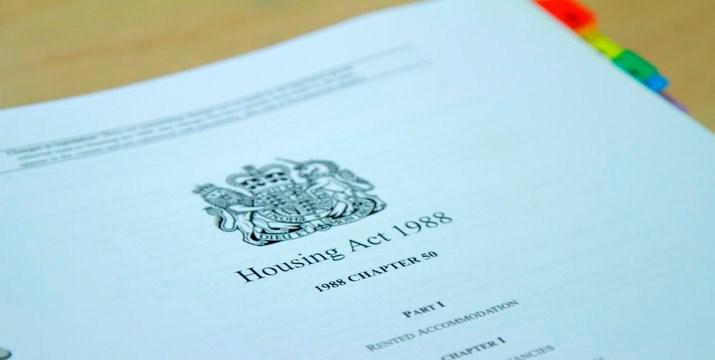How Did Buy to Let Influence the UK Property Market?
Buy-to-let property investment refers to the practice of purchasing residential property with the intention of renting it out to tenants.
This investment strategy has played a significant role in the UK’s housing market and has become an increasingly popular method of investment in recent years.
One crucial milestone in the development of the buy to let investment UK market was the introduction of the Housing Act in 1988. This legislation brought about fundamental changes in the rental market and paved the way for the emergence and growth of buy-to-let investments.
Pre-1988 Rent Control and Limited Investment Opportunities:
Prior to the 1988 Housing Act, the rental market in the UK was heavily regulated, with rent control policies in place. These policies aimed to protect tenants by limiting the amount landlords could charge for rent.
While this provided stability for tenants, it also discouraged landlords from investing in the rental sector. The restrictive nature of the rental market hindered the growth of buy-to-let property investment.
The 1988 Housing Act: Deregulation and Buy-to-Let Emergence:
The 1988 Housing Act, introduced by the Conservative government led by Margaret Thatcher, marked a significant turning point. The Act aimed to liberalize the rental market and give landlords more control over their properties.
It introduced assured shorthold tenancies (ASTs), which allowed landlords to regain possession of their properties after a fixed term, typically six months. This change gave landlords more confidence and flexibility in managing their properties.
Post-1988: Rise of Buy-to-Let Investment:
Following the implementation of the 1988 Housing Act, buy-to-let investment gained traction in the UK. The Act opened up opportunities for individuals to invest in residential properties with the intent to rent them out.
Financial institutions also recognized the potential of this market and started offering specific buy-to-let mortgage products. These mortgages provided investors with the necessary financing to acquire properties solely for rental purposes. As a result, the private rented sector expanded significantly, with more people choosing to invest in residential properties.
The 1996 Housing Act and Further Reforms:
Building on the foundation laid by the 1988 Housing Act, the UK government introduced the Housing Act in 1996. This legislation aimed to consolidate and further regulate the rental market.
It made changes to tenancy types and eviction procedures, including the introduction of section 21 notices, which allowed landlords to regain possession of their properties without providing a specific reason.
These reforms provided landlords with additional security and increased confidence in their investments.
Boom and Bust: The 2000s Property Market:
The early 2000s witnessed a surge in the popularity of buy-to-let investments. Low interest rates, rising property prices, and the perception of property as a safe and profitable investment contributed to this trend.
Many investors saw buy-to-let as a way to generate passive income and capitalize on the booming property market.
However, the financial crisis of 2008 had a significant impact on the property market, leading to a decline in property prices and a challenging environment for investors.
Legislative Changes and Increased Regulation:
In response to the financial crisis and to address concerns about the rental sector, the UK government introduced the Housing Act in 2004. This legislation aimed to enhance safety and management requirements for landlords, including the introduction of mandatory licensing for houses in multiple occupation (HMOs).
These changes sought to improve the quality of rental properties and protect the rights of tenants.
Recent Developments and Current State of Buy-to-Let: In recent years, the buy-to-let sector has faced various challenges and undergone further changes.
The COVID-19 pandemic had a significant impact on the rental market, with fluctuations in demand and eviction restrictions affecting landlords. Additionally, changes in tax regulations have also affected the buy-to-let sector.
The government implemented several measures to reduce tax incentives for landlords, including the phasing out of mortgage interest tax relief and the introduction of the 3% stamp duty surcharge on additional property purchases. These changes have led some landlords to reevaluate their investments and adjust their strategies.
Furthermore, shifts in tenant preferences and emerging trends have influenced the buy-to-let market. There has been an increased demand for rental properties in urban areas, especially among younger generations who prioritize flexibility and mobility.
The rise of the sharing economy and platforms such as Airbnb has also impacted the rental landscape, with some landlords opting for short-term lettings instead of traditional long-term rentals.
The future of the buy-to-let sector remains dynamic and uncertain. While it continues to be a popular investment choice, landlords face ongoing regulatory changes and challenges, such as compliance with energy efficiency standards and licensing requirements.
Additionally, affordability issues and the availability of affordable housing are areas of concern for policymakers.
Conclusion
The history of buy-to-let property investment in the UK has been shaped by various factors, with the 1988 Housing Act serving as a pivotal moment. The Act brought about deregulation, increased flexibility for landlords, and incentives for investment. Subsequent legislative reforms, market dynamics, and regulatory changes have further influenced the buy-to-let sector.
The future of buy-to-let will depend on how the market adapts to evolving tenant demands, regulatory frameworks, and wider housing policy objectives.


